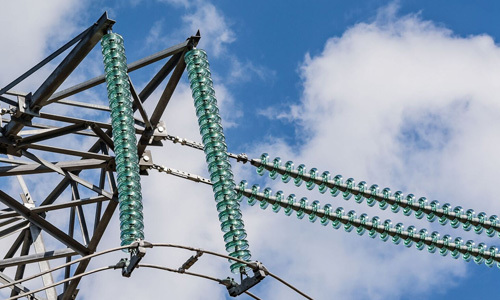A Brief Discussion on the Advantages of Composite Insulators
2025-02-13
Composite insulators are completely different from traditional porcelain or glass insulators in terms of structure and materials, and they have significant performance characteristics that differ from porcelain or glass insulators, summarized as follows:
(1) The axial tensile strength of the fiberglass core rod used in composite insulators is very high, generally above 600MPa, which is 5 to 10 times that of porcelain and comparable to the strength of excellent carbon steel. In addition, the specific gravity of the core rod material is only 2.0, much lighter than steel; the specific gravity of the umbrella skirt material is also less than 2.0, so composite insulators can easily be manufactured to meet specified mechanical load strength levels of hundreds of kilonewtons, with a mass only 10% to 15% that of disc-type suspension insulators. In high-voltage line construction and emergency repairs in mountainous areas, synthetic insulators are favored by operating and construction personnel due to their lightweight, impact resistance.
(2) Composite insulators belong to the rod-shaped insulator structure, with almost equal distances between the inner and outer electrodes, generally preventing internal insulation breakdown and eliminating the need for zero-value maintenance work.
(3) The umbrella skirt sheath material of composite insulators is made of *high polymer materials, which have low surface energy and exhibit strong hydrophobicity. Moisture that falls on the skirt surface condenses into many small, separate water droplets rather than forming a continuous conductive water film, resulting in low leakage current, making it difficult to form local arcs and preventing surface flashover due to contamination. Additionally, due to the high strength of the core rod, the rod diameter and umbrella diameter of suspension insulators are much smaller than those of porcelain insulator strings, resulting in a larger shape factor. Under the same conditions of surface contamination and surface conductivity, the surface resistance of composite insulators is higher than that of porcelain insulator strings with a smaller shape factor. The flashover voltage of insulator contamination is directly related to surface resistance; higher surface resistance leads to lower leakage current, and correspondingly, the flashover voltage is also *higher. Laboratory test results and operational experience have confirmed that composite insulators have high pollution flashover performance, with very few pollution flashover incidents.
(4) Easy operation and maintenance. With high pollution flashover performance, there is no need for cleaning of contamination, nor is there a need for zero-value testing. Currently, composite insulators of various voltage levels in the country do not require traditional, labor-intensive cleaning and zero-value maintenance work, significantly reducing maintenance workload.
Key words:
Glass insulator
Related News
Customers from several countries visited our factory for inspection.
2025-04-27
What are the characteristics of glass insulators?
2024-05-22
In one minute, let you understand glass insulators.
2024-05-22



















